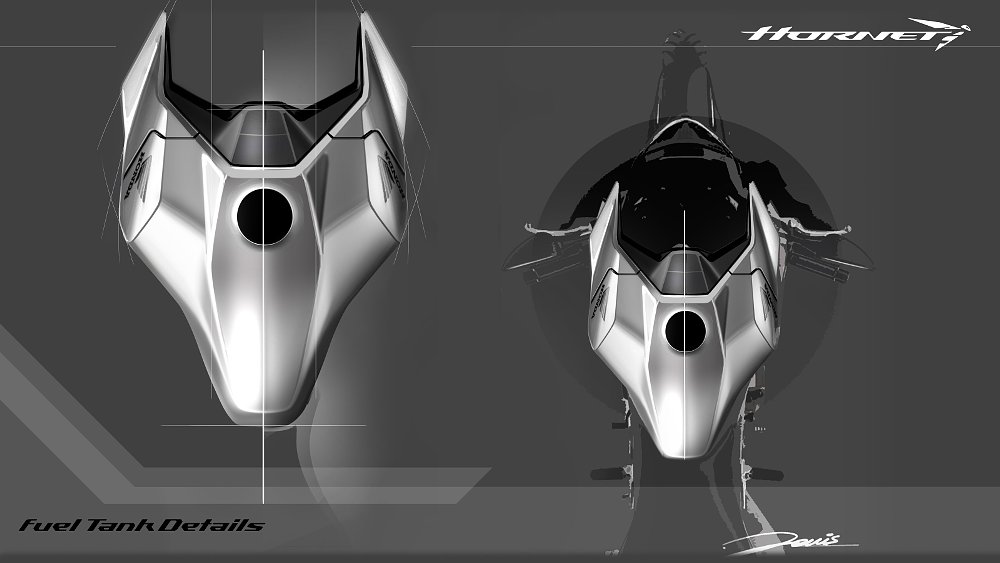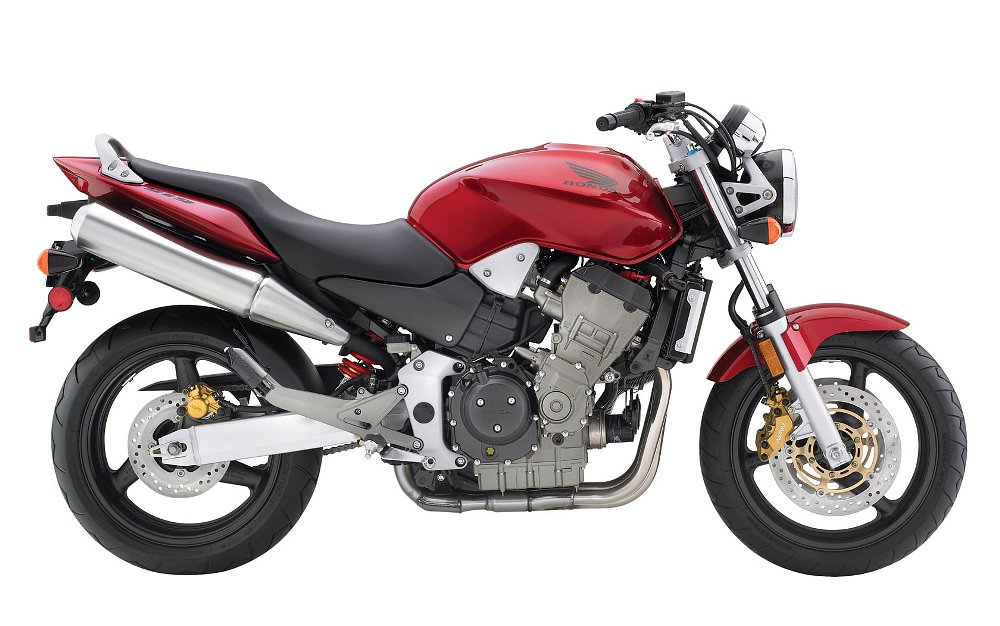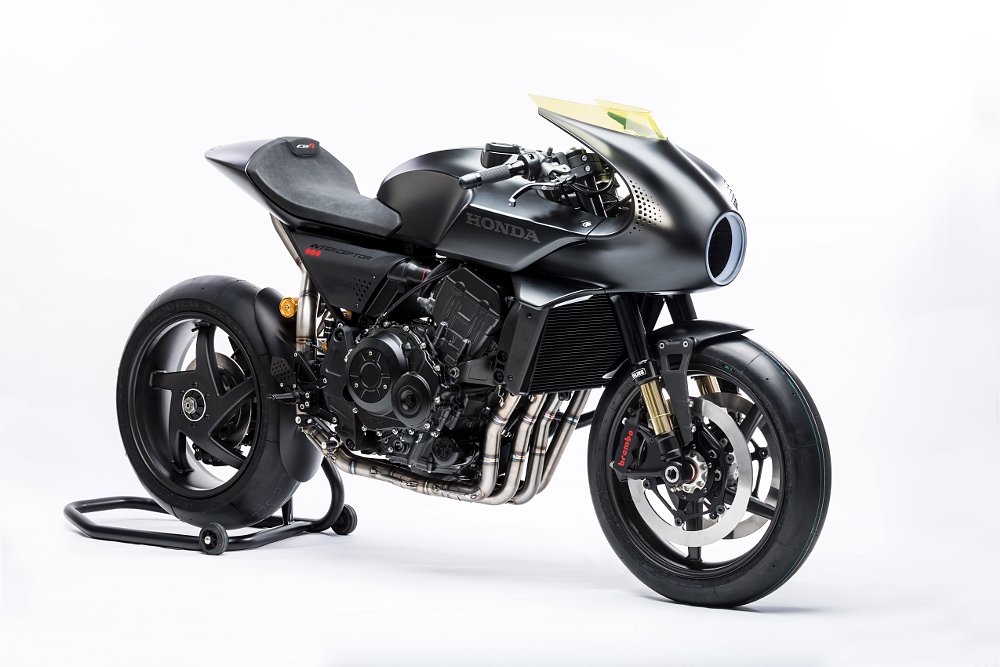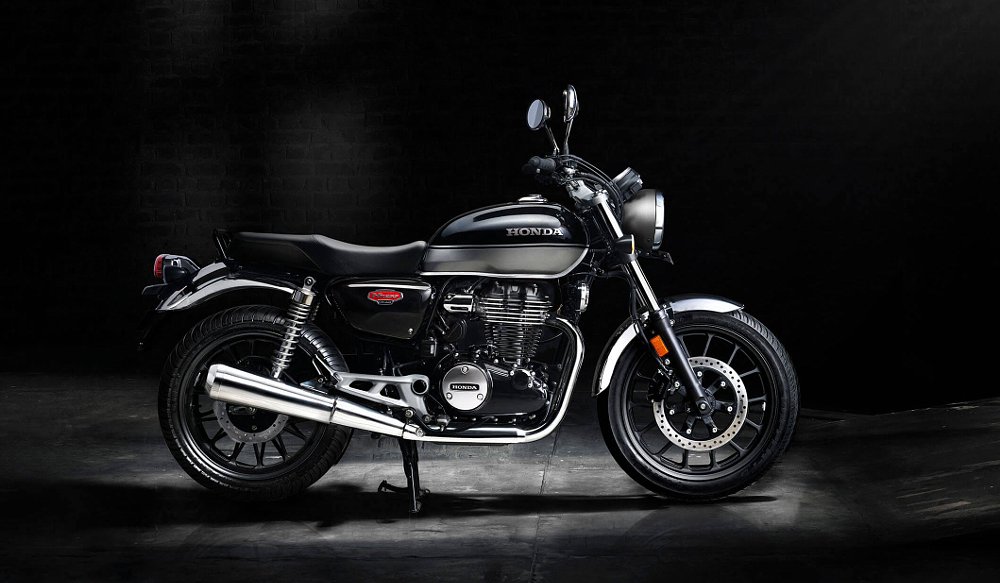Honda first showed a concept for a next-gen Hornet at EICMA in 2019. It seems a modernized take on the Hornet's roadster recipe is coming, and Honda just released more images hinting at a new model. What’s on the way from Big Red? Here’s a quick rundown of what we know, and what we hope to see.
If you aren’t sure what a Honda Hornet is, these inline-four sport-standards were called the 599 and 919 in the United States. Smaller Hornet variations can be found in other markets. Honda’s concept drawings show a sharp naked motorcycle, and a short Hornet concept video features the revving of a parallel twin engine.
The rumor mill suggests a 750-ish cc twin to power this platform. And does that sound like a quickshifter to you? (The engine in the concept sketches is different from any Honda twin in current production, although that doesn’t necessarily mean anything. Honda currently offers a 750 twin in the NC750X.)
The Hornet's return seems nearly certain based on Honda's most recent statements. "The new Hornet is under wraps, but this iconic revival will pay tribute to the standout features that won the bike countless fans from 1998 to 2013. The Hornet always set trends across the board, from intuitive handling and impressive power delivery to purposeful street fighter style. Always ahead of the pack, the Hornet is as comfortable on the urban commute as it is over twisty country roads."

The man behind the latest concept drawings is Giovanni Dovis, a motorcycle designer from Honda R&D Europe. The classic Hornets (599s and 919s) were considered Euro-focused all-rounders in their time. Both models were less popular in the United States, where sport fever had customers walking right past these practical motorcycles to plunk down deposits on the latest race replicas. It’s only fitting, then, that the Hornet reboot should start in Europe. Perhaps U.S. motorcyclists will be more open to the idea this time.

“Honda’s design philosophy is to create something pure and functional in an uncomplicated way – models which are both beautifully simple and emotionally appealing," said Dovis. "The sketches show how the Hornet design concept promises agility, dynamism and light weight thanks to its slim proportions, pointy tail section and super-sharp lines. It creates a new compactly proportioned look and has hallmarks of tension and aggression from front to back, outlining the Hornet’s true sporting purpose.”
In the past, the Universal Japanese Motorcycle (UJM) was a standard street motorcycle with an inline four laid across its tubular steel chassis. It can be argued that today’s UJMs are the popular 650-class parallel twins like Yamaha’s MT-07 and Kawasaki’s Z650. Honda’s current CB650R is the odd duck in its class: a fairly premium inline-four that’s heavier, pricier, and more stylish than the competition. A 750 cc p-twin Hornet could play out well for Honda, especially as a step up from the ho-hum CB500F. There are also rumors of an upcoming Transalp 750 adventure model that would presumably share its engine with the Hornet. The mill would likely make around 85 horsepower for a little edge over the current crop of 650s. Here’s hoping Honda keeps the weight low. It would be nice to see integrated luggage mounts for both the Hornet and Transalp to boost utility.

The concept drawings show an aggressively pointed tail with a solo seat. A wide, flat saddle could make the Hornet all-day comfy when combined with the flat handlebar. Heavily slanted tank and headlight profiles recall recent KTM Duke designs. The raked-out fork in the drawing fits the bodywork’s lines, but that angle is unlikely to make it to production. The frame looks to be a trellis construction mated to cast sections holding the engine and swingarm. Note the concept’s low-slung exhaust in contrast to the underseat pipes found on the Hornets of the late 1990s to mid-2000s.
Previous Hornet models always struck a balance between simplicity and build quality, power and practicality. Modern motorcyclists are more than willing to consider a sporty standard. An MSRP under $10,000 would certainly help sales for the new model, but to be truly competitive, that number might need to be closer to $9,000 to compete against budget blasters like the Yamaha MT-09. Ultimately, the Hornet’s fate will be decided by its ability to hang with the tough competition in the desirable upper middleweight standard class.

 Membership
Membership










